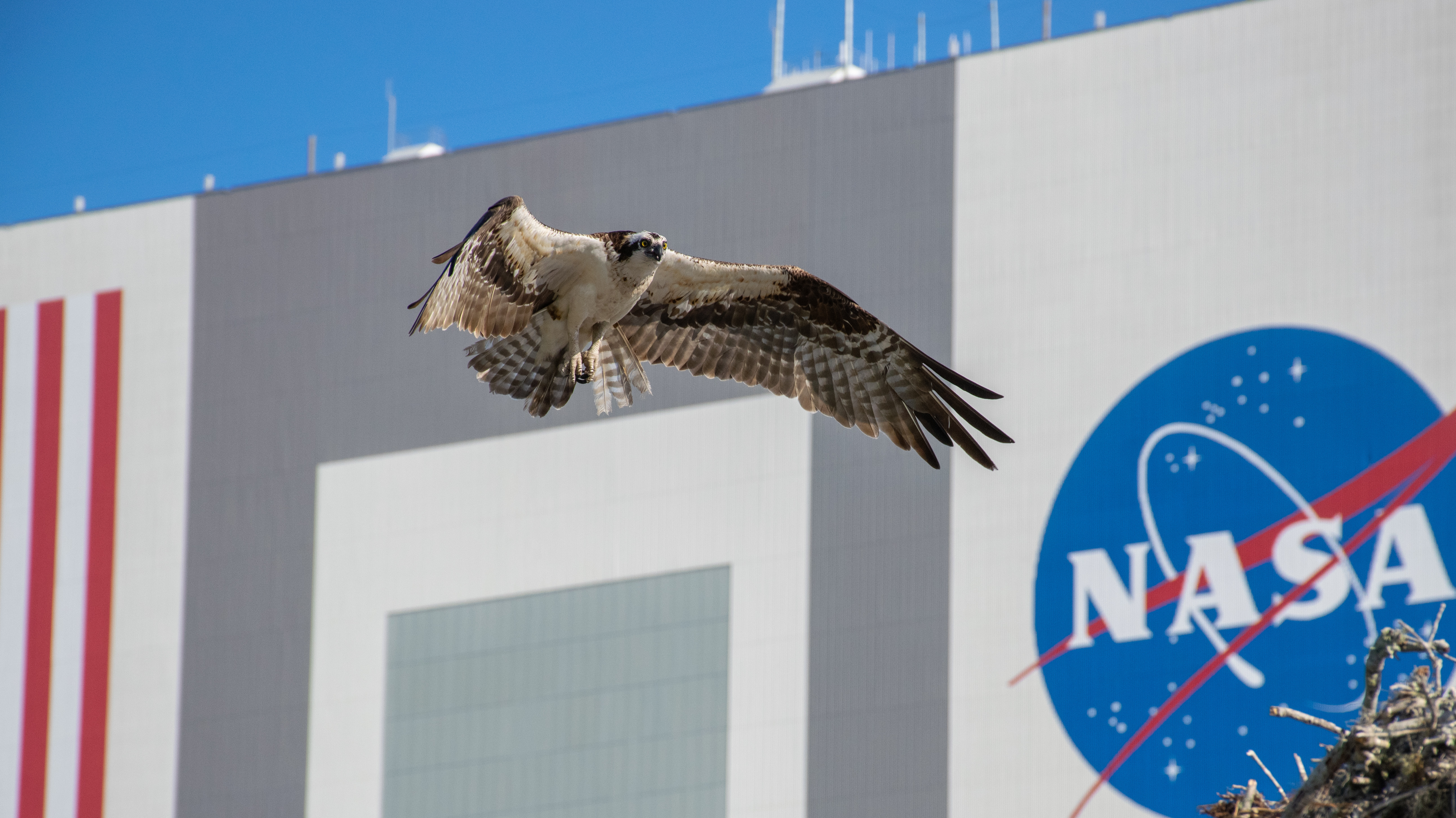Inside Sierra Nevada's Inflatable Space Habitat for Astronauts in Lunar Orbit (Photos)
The habitat is one of five NASA is considering for its Gateway outpost.
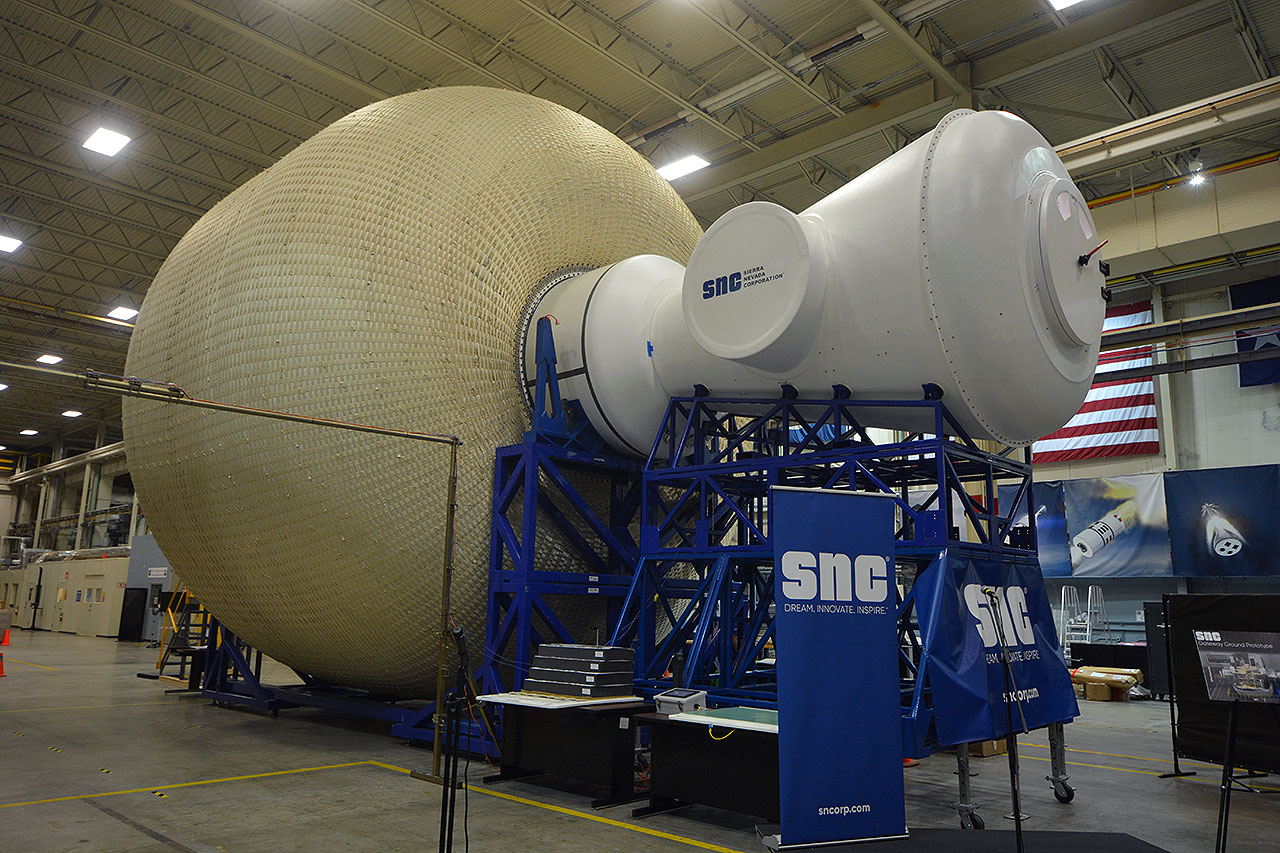
HOUSTON — Astronauts may one day orbit the moon, live on the lunar surface or travel to Mars in a multifloor, inflatable habitat, should a Colorado company's design be adopted by NASA.
Sierra Nevada Corp. (SNC) on Wednesday (Aug. 21) provided a close-up look at its full-scale mockup for NASA's Lunar Gateway, a human-tended orbital platform to support missions on the moon's surface and future flights into deep space. Developed under the agency's NeXTSTEP-2 (Next Space Technologies for Exploration Partnerships-2) contract, SNC's ground prototype is one of five concepts that NASA is assessing for future use as part of its Artemis program architecture.
"Johnson Space Center just finished testing this, where they put a crew inside for about three days — what they call 'day-in-the-life testing,'" said Steve Lindsey, vice president of SNC Space Exploration Systems and a former NASA astronaut. "That is where you go through a simulated mission, you test the functionality of the space and how well it works accomplishing the mission."
Related: 6 Private Deep Space Habitat Concepts to Pave the Way to Mars
"We don't have the official results of that testing, but we are told it went very, very well, so we are really excited about that," Lindsey said.
Key to SNC's habitat design is its ability to grow in volume once it is launched into space. The Large Inflatable Fabric Environment, or LIFE, habitat can start out compact enough to fit inside an 18-foot (5.4 meters) rocket fairing but then expand to 27 feet in diameter and 27 feet long (8 by 8 m).
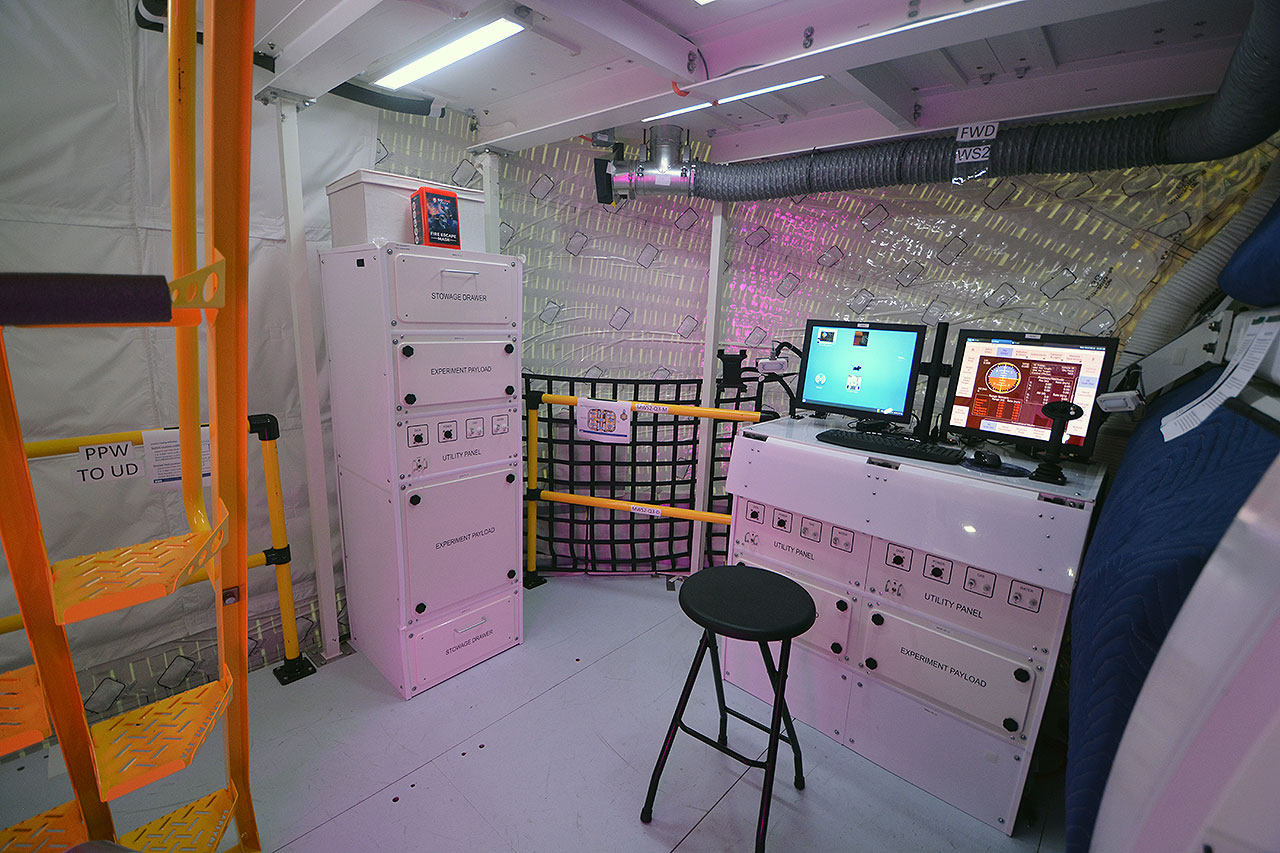
The LIFE's pressurized volume is 10,600 cubic feet (300 cubic m), or about one-third the pressurized volume of the International Space Station.
Get the Space.com Newsletter
Breaking space news, the latest updates on rocket launches, skywatching events and more!
"We wanted to get the maximum amount of space for the astronauts to use as a habitat but still fit inside of a rocket," Lindsey explained. "The advantage of an inflatable is that you can launch it inside a payload fairing, get it up to space and then, once [there], inflate it, expand it out to a size like this and you can get a huge amount of volume."
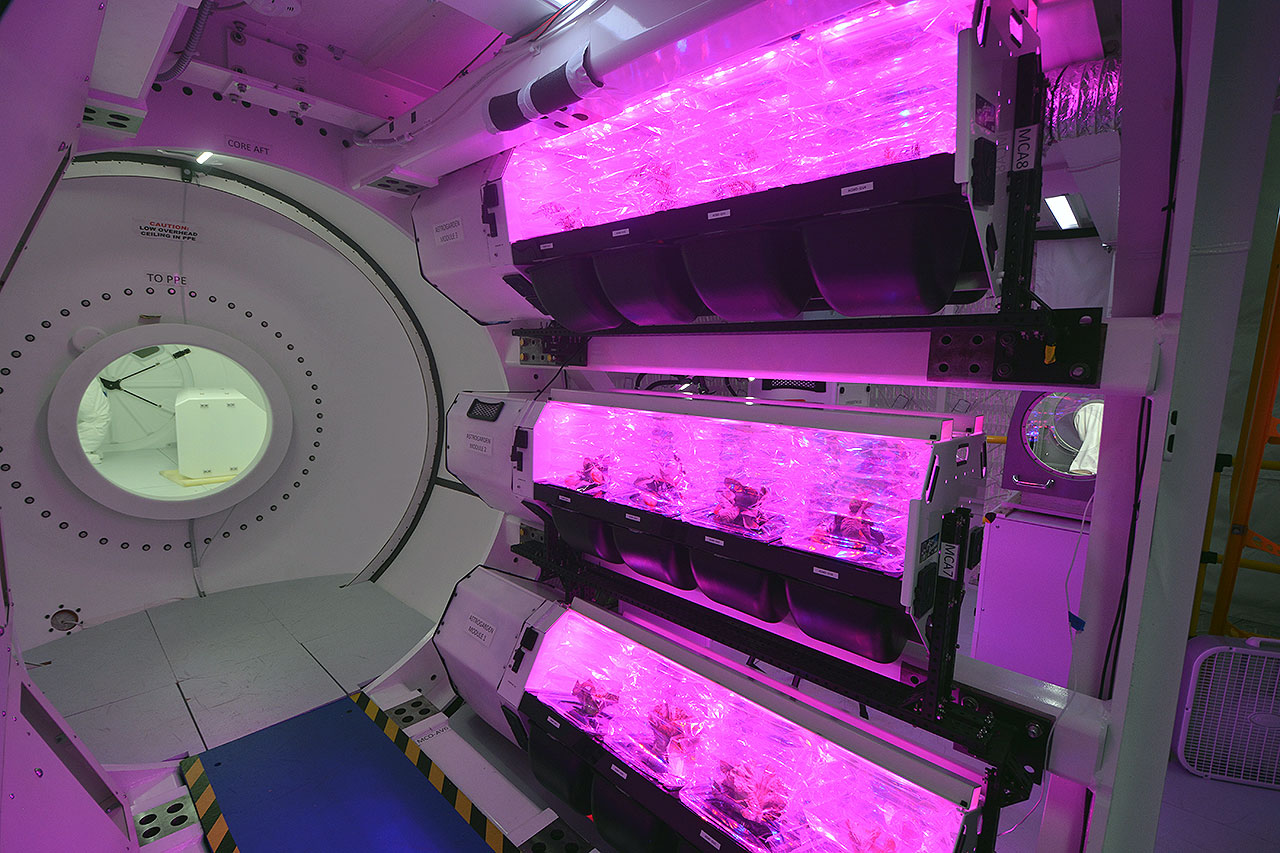
The outside of the prototype LIFE habitat is comprised of a urethane pressure bladder, a nylon liner and a woven Vectran fabric restraint layer. Additional insulation layers would be added to a space-bound module for thermal control and micrometeorite protection.
In developing the habitat, SNC also pulled from its experience building a small space plane that NASA has contracted to fly six cargo resupply missions to the space station beginning in 2021.
"We've leveraged a lot of the technologies from our Dream Chaser program. For example, this module in the back is based on a cargo module that comes out of the Dream Chaser program," said Lindsey, referring to the logistics and control module that attaches to the rear of the LIFE habitat.
Related: Dream Chaser: Sierra Nevada's Design for Spaceflight
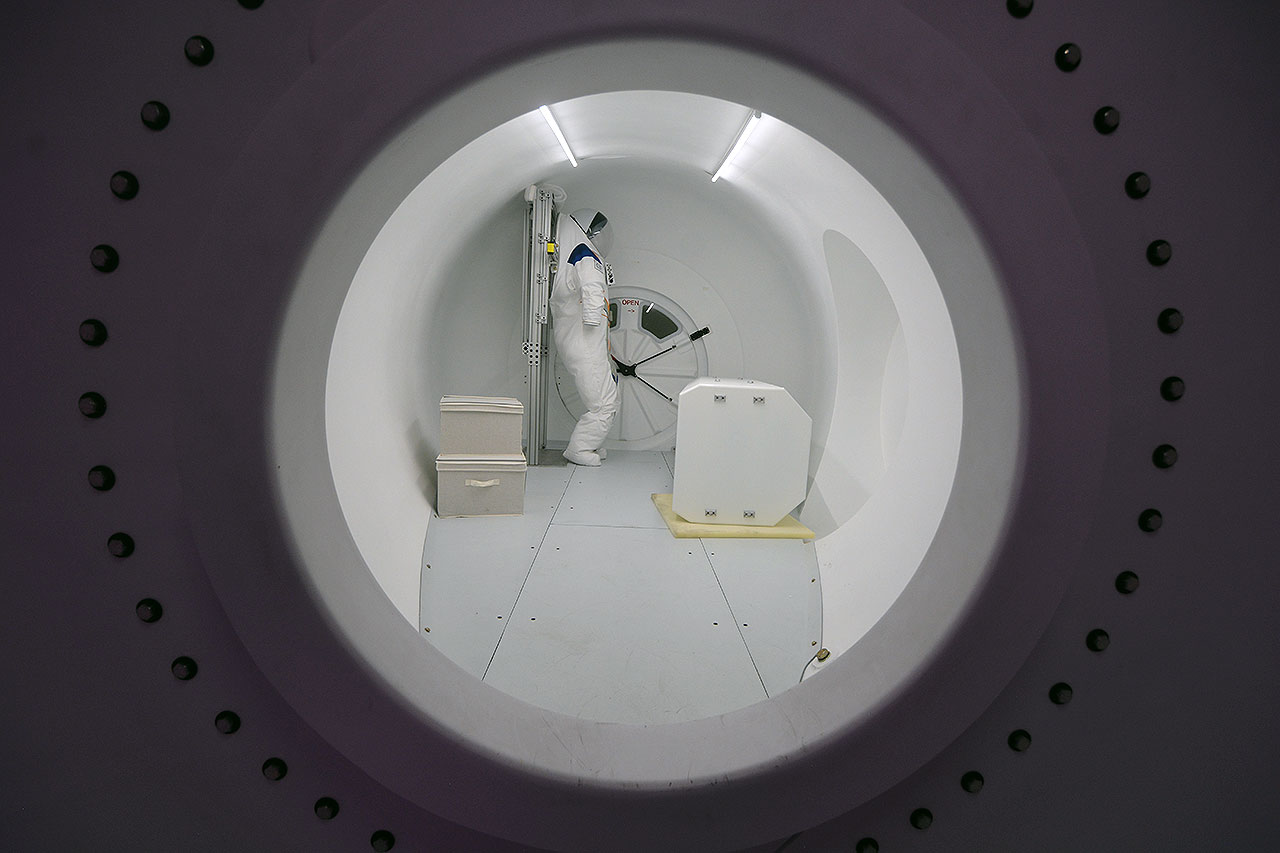
The inside of the hab is divided into three floors, maximizing the use of the pressurized volume. For the prototype, SNC outfitted the floors with a science laboratory, a microgravity garden, a medical bay, individual crew quarters, a waste management system (or bathroom) and a galley.
"We worked the human factors really hard to lay it out so we had research stations, robotics work stations, living quarters for the crew and all of the things they would need to function," Lindsey said.
Absent from the prototype are any windows for the astronauts to view the moon (or Mars), but those could be added.
"We can put windows in, and we have a provision for doing that," Lindsey told Space.com. "We are continuing to work on this contract, and that is one of the things we're looking at."

In addition to SNC's Gateway concept, NASA is assessing NeXTSTEP-2 mockups from Bigelow Aerospace (which specializes in inflatable habitats), Boeing, Lockheed Martin and Northrop Grumman. The agency recently stated its intention to award Northrop Grumman a contract for a "minimal" habitat module to support an initial version of the Gateway to be deployed by 2024, but a larger Gateway habitat module may still be needed for sustained operations on the lunar surface.
SNC is also looking at other applications for its design, based on the work it has accomplished with the ground prototype.
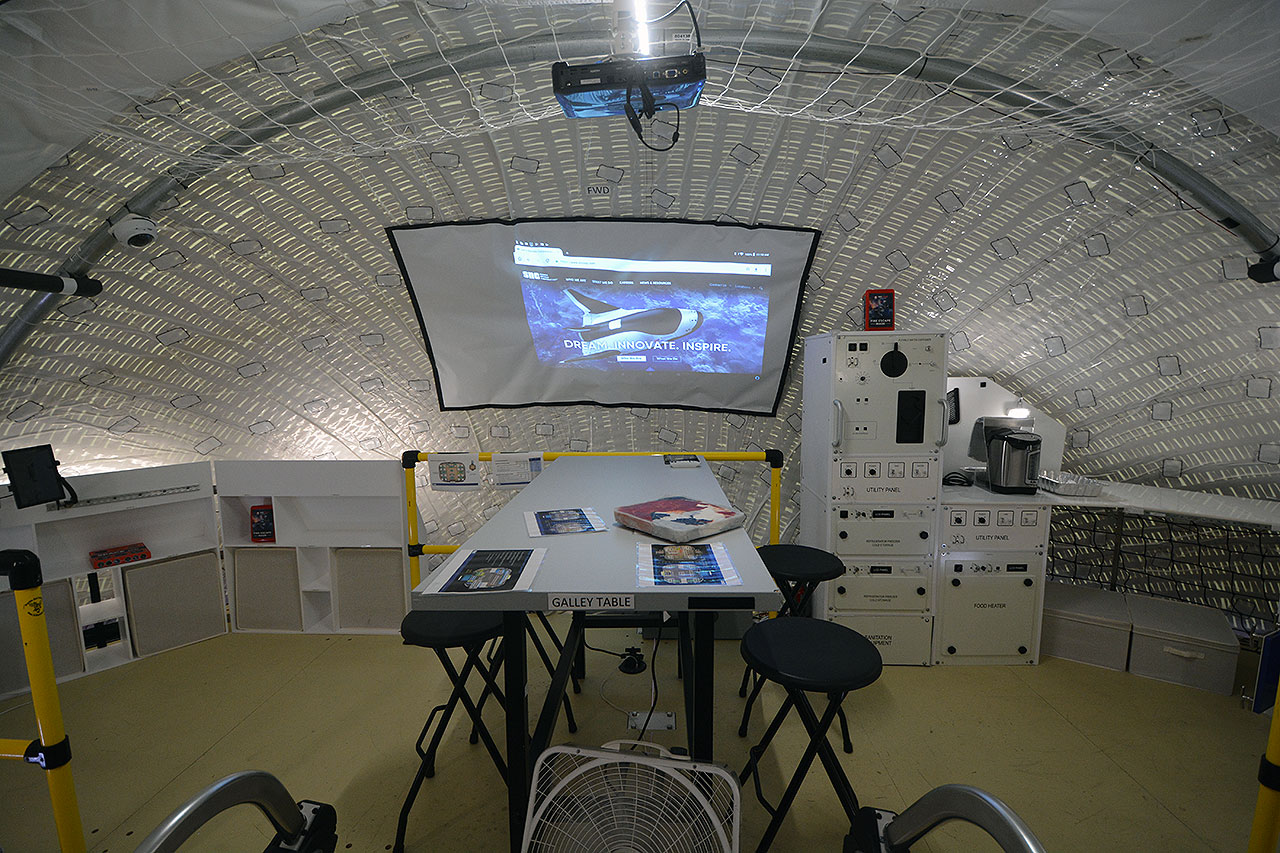
"We're looking at this not only for the Gateway, but also for potential human habitation on the surface of planets, whether it be the surface of the moon or the surface of Mars in the future," said Lindsey. "It can be sized accordingly depending on the crew's needs. For this particular effort, we had a requirement for a thousand-day transit mission to Mars, so it is actually sized to support that."
- NASA Plans to Build a Moon-Orbiting Space Station: Here's What You Should Know
- Home on the Moon: How to Build a Lunar Colony (Infographic)
- Lunar Legacy: 45 Apollo Moon Mission Photos
Robert Pearlman is a Space.com contributing writer and the editor of collectSPACE.com, a Space.com partner site and the leading space history news publication. Follow collectSPACE on Facebook and on Twitter at @collectSPACE. Follow us @Spacedotcom, Facebook and Google+.
Join our Space Forums to keep talking space on the latest missions, night sky and more! And if you have a news tip, correction or comment, let us know at: community@space.com.

Robert Pearlman is a space historian, journalist and the founder and editor of collectSPACE.com, a daily news publication and community devoted to space history with a particular focus on how and where space exploration intersects with pop culture. Pearlman is also a contributing writer for Space.com and co-author of "Space Stations: The Art, Science, and Reality of Working in Space” published by Smithsonian Books in 2018.In 2009, he was inducted into the U.S. Space Camp Hall of Fame in Huntsville, Alabama. In 2021, he was honored by the American Astronautical Society with the Ordway Award for Sustained Excellence in Spaceflight History. In 2023, the National Space Club Florida Committee recognized Pearlman with the Kolcum News and Communications Award for excellence in telling the space story along the Space Coast and throughout the world.









